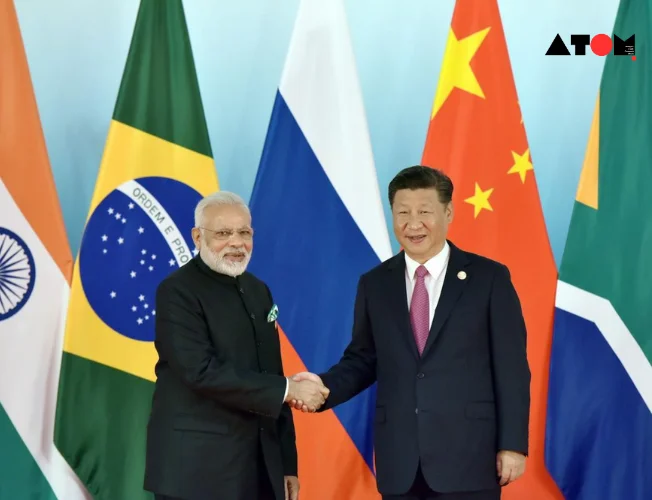China, under the leadership of Xi Jinping, has been experiencing economic and political challenges, particularly evident in the diminishing appeal of its Belt and Road Initiative (BRI). Despite this, Beijing continues to assert its baseless territorial claims, notably over Arunachal Pradesh, in what appears to be a deliberate attempt to provoke India.
The Provocative Statements Amid Prime Minister Modi’s Visit
Chinese reaffirmation of its disputed claims over Arunachal Pradesh coincided with Prime Minister Narendra Modi’s recent visit to the border state. This timing suggests a calculated move by China to assert its territorial claims and stir tensions deliberately.
India’s Response and Strategic Approach
While India has verbally retaliated against China’s unwarranted assertions, its primary objective seems to be to avoid escalating tensions while keeping the issue alive. Unlike China, India, under PM Modi’s leadership, has experienced growth both economically and politically. India’s expanding global influence positions it better to counter coercive powers like China.
India’s Strategic Engagement
India has adopted a strategic approach to deal with China’s provocations. Instead of being rattled by repetitive Chinese claims, the Modi government has opted for a measured response. Efforts include engaging allies in Southeast Asia, exemplified by External Affairs Minister S Jaishankar’s visit to the Philippines and India’s increasing focus on Taiwan.
International Dynamics and India’s Stand
While the US remains conflicted over its stance on the ‘One China’ policy, India has refrained from echoing Beijing’s narrative. India’s engagement with the Tibetan leadership in exile and support for freedom of navigation in the South China Sea reflect its independent stance on China-related issues.
Political Implications and Military Preparedness
China’s provocations also serve as ammunition for India’s political opposition, urging the Modi government to confront the PLA. However, India’s military infrastructure along the Line of Actual Control (LAC) has significantly improved under the Modi regime. Classified efforts ensure adequate ammunition and artillery for Indian troops, bolstering preparedness.
Behind China’s assertive stance lies economic turmoil, marked by stock market declines and intervention exceeding RMB 400 billion. The BRI’s mounting debt, approaching a trillion US dollars, poses significant challenges, with debtor countries struggling to repay loans. China’s projected growth faces hurdles, compounded by global scrutiny of its coercive tactics.
India’s Countermeasure: A Repudiation Loop
Amid China’s persistent claims, India’s best response lies in reaffirming its rejection of Beijing’s territorial assertions. By maintaining a consistent stance, India aims to counter China’s narrative effectively.
China’s recent provocations in Arunachal Pradesh underscore broader geopolitical tensions and India’s strategic response. While Beijing seeks to assert its influence, India remains steadfast in safeguarding its territorial integrity while navigating complex international dynamics. As the situation evolves, India’s measured approach will be crucial in managing tensions and upholding regional stability.
Shishir Gupta is the author of “Indian Mujahideen: The Enemy Within” (2011, Hachette) and “Himalayan Face-off: Chinese Assertion and Indian Riposte” (2014, Hachette). He has been awarded the K Subrahmanyam Prize for Strategic Studies in 2015 by the Manohar Parrikar Institute for Defence Studies and Analyses (MP-IDSA) and the 2011 Ben Gurion Prize by Israel.





